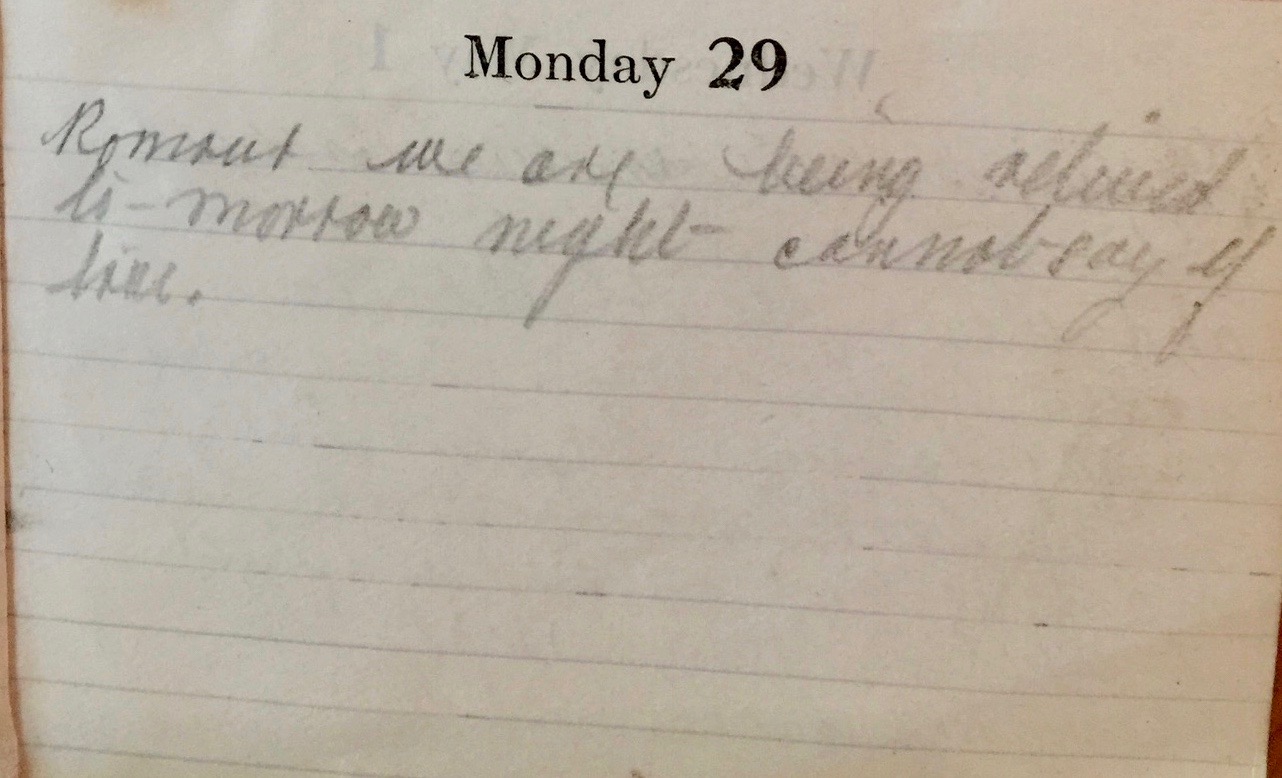Monday April 29th, 1918
Rumour we are being relieved tomorrow night – cannot say if true.
Anti-Aircraft tactics
Today Johnny uses machine guns to fire upon British planes. As the activities of aircraft became more deadly to both civilians and troops, retaliation became more important.

The photograph ‘Watching the Sky’ shows two British soldiers on anti-aircraft guard duty in Macedonia. One is using binoculars to spot any hostile aircraft and the other is ready to use the alarm bell, possibly confiscated from a church for this very purpose.*
The photograph ‘Fixing to Fire’ shows a Vickers anti-aircraft machine gun on the White Tower in Salonica harbour in January 1917.^ There appear to be several hangers-on watching with interest as the two soldiers from a Scottish battalion prepare the gun.
It was very tricky to bring down a plane from the ground.

Captain Stewart recognized this as he watched anti-aircraft guns (as opposed to machine guns) trying to do this on the Western Front in April 1916. He recalled, ‘A pretty sight. A bang, a long wait, and then a puff of smoke sometimes near and more often some distance from the plane. Very difficult shooting, as the plane would not go straight but like a snipe, zigzag and up and down, so that the gunners had to make a guess as to what direction the plane was going to turn and whether descend or ascend. Not only had the aim to be correct but the fuse to be correctly timed, and this all had to be done at express speed. No wonder so few hits were recorded.’¹
This challenge is probably why such a fuss was made when, using a shell from a 12-pounder, the HMS Agamemnon downed a Zeppelin over Salonica Harbour in 1915.
13th (Service) Battalion War Diary – 29th April 1918 – Crow Hill
Our artillery showed its usual activity. Enemy artillery was more active than usual, he seemed to be registering targets and barrages, especially so around Krastali and up to Pip Ridge.
Enemy machine guns fired at our planes from behind White Scar, Little Dolina and Spaniel Hill. Our aircraft spent the whole day over the enemy lines to the West of Trapeze de Pobreg. Enemy planes were up but did not cross our lines. Two enemy planes patrolled around observation balloon which was up east of Pobreg from 17:30 to 18:40 hrs.
A patrol to Dautli Village found no signs of enemy or of recent occupations, notices posted up by 2 patrols on the 28/29 had not been removed. A short trench about 50 yds long appears to be under construction between the two new works on Devedzelli Spur. There appears to be an Observation Post immediately to the east of Communication Trench on west of Devedzelli Hill as men were seen looking out during the day. At 22:30 hrs our artillery commenced a heavy bombardment in direction of Boyau Hill. Enemy fired many Very Lights and machine guns in direction of Reselli. Green lights and green and red signals were also put up. Artillery fire died down at 23:15 hrs. Visibility all day was high.
Sun helmets will be taken into wear forthwith between the hours 10:00 to 20:00
References & Further Reading
¹ ‘A Very Unimportant Officer’ by Captain Alexander Stewart & Cameron Stewart (2008) Kindle Locn 413
* (Q 79040) copyright Imperial War Museum
^ (Q 32649) copyright Imperial War Museum


